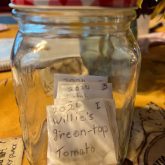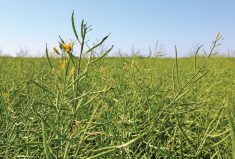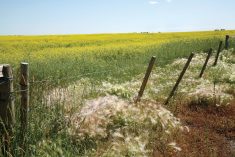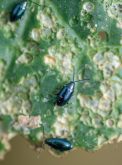Q: What should I consider when choosing seed varieties for the next growing season?
A: Seed-selling season seems to come earlier each year. Though it feels counterintuitive to buy next year’s seed before current crops are in the bin, logistics and contra- season seed production in South America make it necessary to start this process early to ensure the seed is available at your retailer for spring. When making selections for next year, there are multiple things to consider, but a few stand out.
The first thing to take into consideration is which herbicides are available for your crops. Crop rotation is critical for pest management, and herbicide rotation is just as important. When looking to grow a traited canola, weed pressures on your farm will dictate which of the Liberty Link (LL), glyphosate (TruFlex or TF), OptimumGly (OptGly), or Clearfield (CL) varieties will work best. For cereals in your rotation, wheat will have more chemical options than barley or oats. Depending on weeds present, it might mean switching the type of cereal grown on a field the following year.
Read Also

Claas brings 1000 Series SP forage harvesters to Canada
In mid-August, Claas unveiled its new line of Jaguar forage harvesters at an event in Visalia, California, deep in the heart of that state’s dairy region.
Additionally, seed treatments are important when it comes to disease as well as insects. In canola, certain seed treatments have efficacy on flea beetles, cutworms, or both. Which one is the fit for your operation will be based on local pressures. In corn, there are a variety of seed treatments that can be applied based on local pressures and soil conditions.
Continuing with canola, Pod Shatter (InVigor) or harvest management (all other suppliers) are tools to help at harvest when making swathing or desiccation decisions. These tools are not foolproof; however, they can help protect crops against poor harvest conditions that can cause increased pod shatter.
In wheat, wheat midge is a pest that can be a significant pressure depending on your area. With limited chemical options available to control wheat midge, wheat varieties that have a refuge variety (varietal blend or VB) to limit wheat midge damage can be a great investment. However, it requires a stewardship agreement to only plant one generation past certified seed.
In corn, European corn borer is a pest that is starting to show up more in high-intensity corn areas. Refuge-in-a-bag (RIB) varieties contain a refuge, corn borer susceptible genetics like VB varieties in wheat, which protect the majority of your crop.
Finally, disease will affect all crops commonly grown in Western Canada. Some varieties have genetics that perform better in moderate- to high-disease-pressure conditions. In areas that have historically higher disease incidence, or in situations where your crop rotation is tight, these varieties can help to manage risk on your operation.
Make sure you take the time to meet with your crop adviser or agronomist to discuss local performance of all crop varieties and which are the best fit for your farm —and your logistics.
– Derek Flad, PAg, CCA, is the southern Alberta division’s agronomic innovation manager with Nutrien Ag Solutions.















